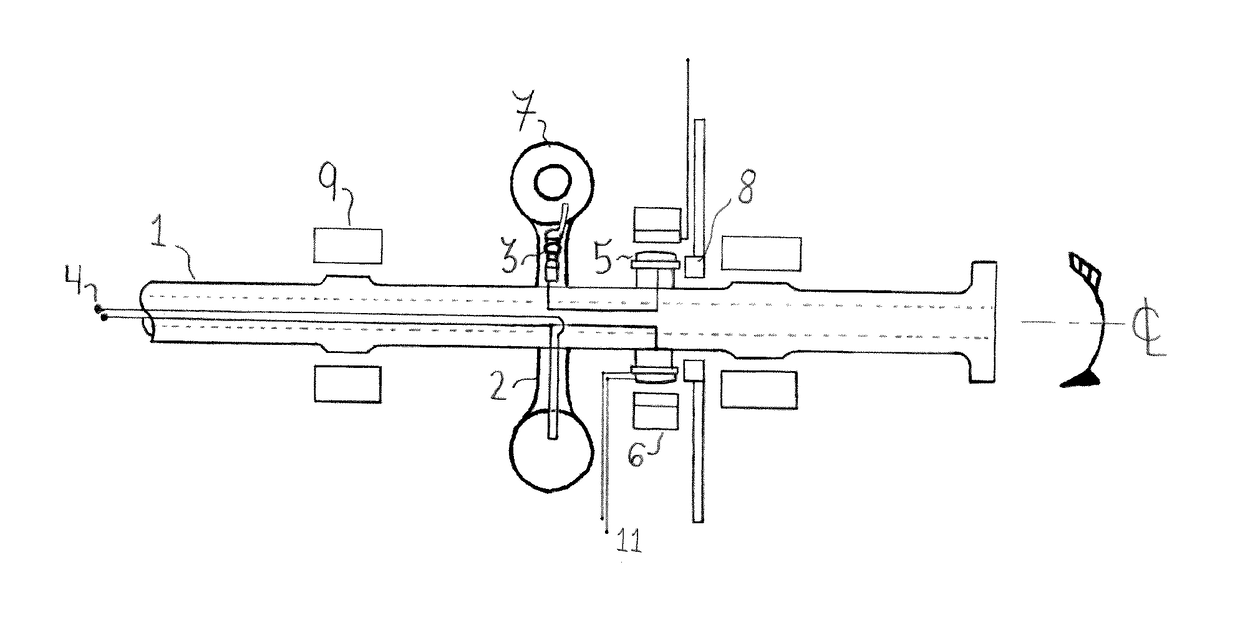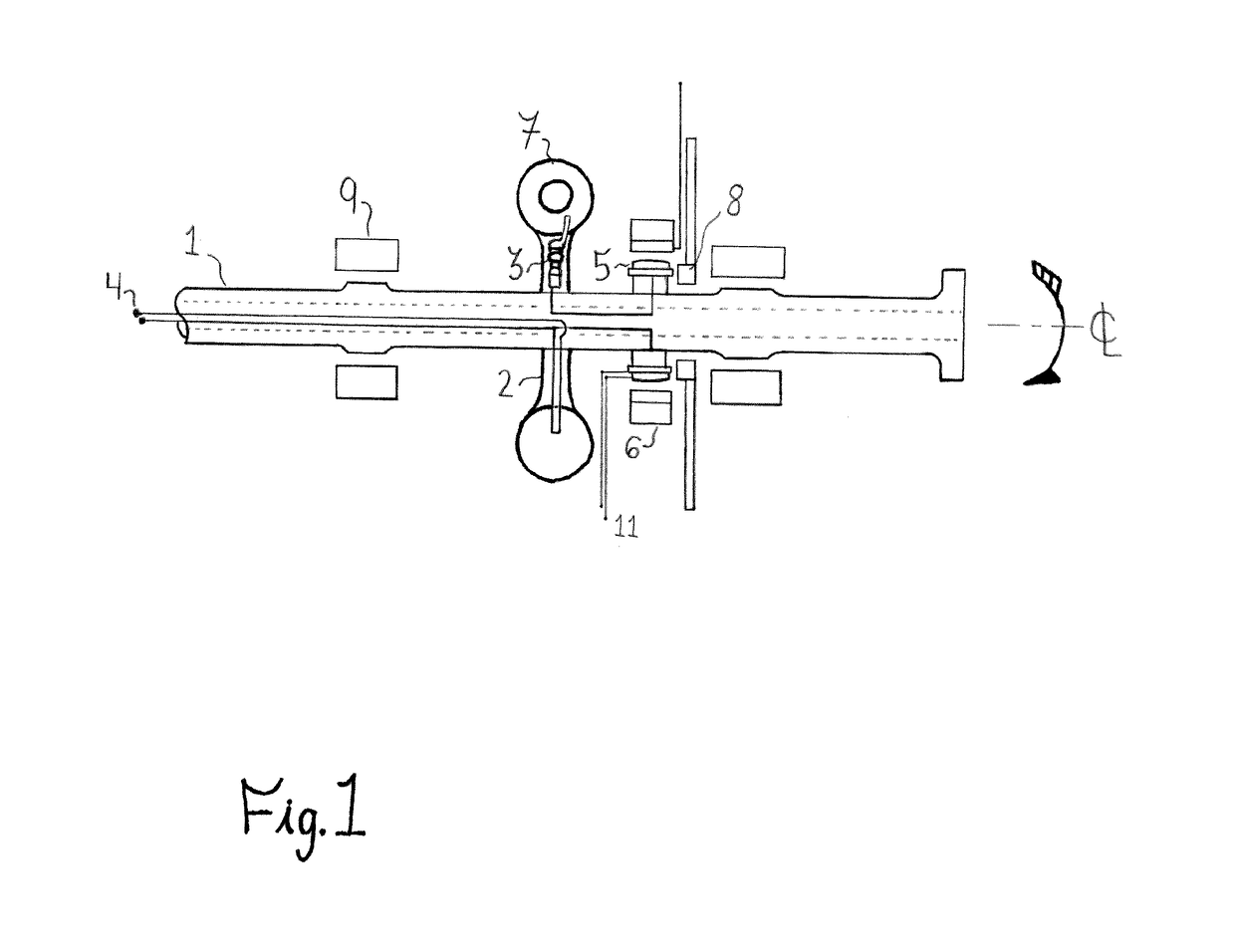Rotating, self-excited, asymmetric radio frequency resonant cavity turbine for energy storage and power production
a radio frequency resonant cavity, self-excitation technology, applied in the direction of machines/engines, magnetic bearings, steam turbines, etc., can solve the problems of limited power generation capacity of steam, hydraulic, wind and combustion turbines, and limited energy input into their shaft systems
- Summary
- Abstract
- Description
- Claims
- Application Information
AI Technical Summary
Benefits of technology
Problems solved by technology
Method used
Image
Examples
first embodiment
—FIG. 1—First Embodiment
[0046]FIG. 1 shows a cross sectional view of one embodiment of the asymmetric radio frequency resonant cavity turbine for energy storage and power production. Shown in the figure is a main shaft 1. Connected to the main shaft 1 are torque transfer mechanisms (Arms depicted, however can embody any typical arrangement such as a Hub or force coupled rotor body) 2. The arms 2 are linked integrally in terms of mechanical strength to the Asymmetric Radio Frequency Resonant Cavities 7. The cavities 7 are thrusters 7. Adapted microwave generators 3 such as adapted Klystron Tubes 3 are connected to the thrusters 7 and feed the thruster 7 the necessary electromagnetic signal required for thrust production. The Microwave generators 3 are also linked to an excitation system 5 which can receive outside power input or self excite utilizing rotational inertia converted through the generator and an exciter 10. The microwave generators 3, and thrusters 7 are cooled with a flu...
PUM
 Login to View More
Login to View More Abstract
Description
Claims
Application Information
 Login to View More
Login to View More - R&D
- Intellectual Property
- Life Sciences
- Materials
- Tech Scout
- Unparalleled Data Quality
- Higher Quality Content
- 60% Fewer Hallucinations
Browse by: Latest US Patents, China's latest patents, Technical Efficacy Thesaurus, Application Domain, Technology Topic, Popular Technical Reports.
© 2025 PatSnap. All rights reserved.Legal|Privacy policy|Modern Slavery Act Transparency Statement|Sitemap|About US| Contact US: help@patsnap.com


